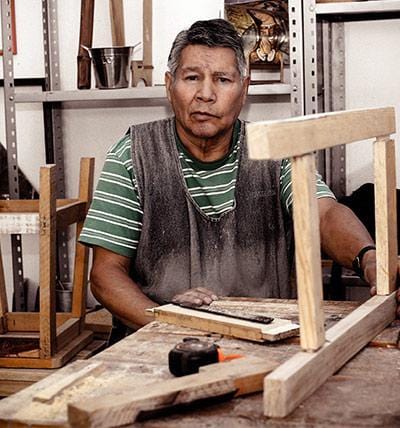More Canadian seniors are choosing to age in place, valuing the comfort and familiarity of their own homes. But living independently brings unique safety challenges that require thoughtful solutions.
From accessible floor plans to smart technology, intentional design can transform a house into a safer, more supportive space—empowering older adults to maintain confidence and control over daily life.
This article shares practical tips, room-by-room upgrades, and the latest innovations to help families create secure environments where seniors can thrive.
Whether you’re updating a loved one’s home or planning ahead for your own future, these strategies make every room safer—and living at home easier—for Canada’s aging population.
Essential Safety Features: Where to Begin
Every year, thousands of Canadian seniors experience preventable injuries at home—most often due to slips, trips, or poor accessibility.
The good news? Even simple safety upgrades can make a dramatic difference in daily life and long-term confidence.
Start with the basics: non-slip flooring in high-risk areas like bathrooms and kitchens greatly reduces the chance of falls.
Improved lighting—especially at entryways, stairs, and hallways—helps seniors spot hazards quickly, even during those early winter evenings common across Canada.
Keep pathways clear and wide enough for walkers or wheelchairs; remove throw rugs, cords, and clutter that might cause tripping.
Easy-to-grip lever handles on doors and faucets can offer better control for arthritic hands.
Pro Tip: Install sturdy handrails on both sides of staircases—not just one—for added support.
For those seeking additional peace of mind, panic alert options in Canada provide 24/7 emergency assistance at the push of a button.
This technology ensures help is always close by, whether at home or on the go.
Key Takeaway: Prioritizing foundational safety features sets the stage for greater independence and security throughout the home.
Room-by-Room Safety Upgrades

Every room in the home can present unexpected safety risks for older adults.
By focusing on specific upgrades in high-use spaces, families and caregivers can dramatically lower the risk of accidents and support independent living.
Let’s look at simple, effective ways to make bathrooms, kitchens, bedrooms, and living areas safer for seniors.
Bathroom: Preventing Slips and Falls
The bathroom is a leading spot for slips and falls among seniors.
Installing sturdy grab bars near the toilet and inside the shower provides much-needed support when standing or moving around.
Add non-slip mats both inside and outside the tub or shower to minimize slipping on wet surfaces.
Consider a walk-in tub or barrier-free shower for easier entry—especially if stepping over traditional tub sides is difficult.
Raised toilet seats help with sitting and standing, reducing strain on joints.
Lever-style faucets are easier to use than knobs, especially for those with arthritis or reduced grip strength.
Kitchen: Safe Cooking and Meal Prep
Kitchens can be full of hazards—sharp tools, hot surfaces, heavy items up high.
Start by improving lighting, especially under cabinets and over counters, so everything is clearly visible while cooking or cleaning up.
Select appliances with automatic shut-off features to prevent fires if a stove or kettle is left unattended—a common issue as we age.
Store frequently used pots, utensils, and ingredients at waist height to avoid unnecessary reaching or bending.
This reduces strain and lowers the risk of dropping heavy objects or losing balance while stretching for hard-to-reach shelves.
Bedroom and Living Areas: Clear Paths and Comfort

The bedroom and living room should be safe retreats—not minefields of tripping hazards like loose rugs or tangled cords.
Keep walkways clear by rearranging furniture if needed. Secure carpets with non-slip backing or remove them altogether if they curl at the edges.
Make sure phones—or better yet, panic buttons—are easy to reach from beds or chairs in case help is needed quickly.
Adjustable beds or recliners add comfort but also make getting in and out much safer for people with mobility issues.
Home Modifications and Falls: A 2023 systematic review found that home modifications like grab bars and hazard removal significantly cut fall risks for older adults.
Simple upgrades truly matter—especially when seniors live independently.
Key Takeaway: Small changes throughout the home create major improvements in safety—and peace of mind—for aging loved ones.
Leveraging Technology for Senior Safety
Technology is changing the way Canadian seniors stay safe at home.
Smart devices and innovative alert systems can provide extra support—giving families peace of mind and helping older adults maintain their independence longer.
From voice-activated assistants to wearable panic buttons, these solutions deliver both day-to-day convenience and reliable emergency response when it matters most.
Let’s explore how modern tech is transforming senior safety at home.
Smart Home Devices and Automation
Smart home technology makes everyday life simpler and safer for seniors.
Voice-activated assistants like Google Home or Amazon Alexa let users control lights, adjust thermostats, or call family members without having to get up or use complicated controls.
Automated lighting—especially motion-activated night lights—reduces the risk of trips and falls after dark.
Sensor-based alarms can detect smoke, carbon monoxide, or even water leaks before they become emergencies, ensuring rapid response and reducing potential hazards around the house.
Pro Tip: Choose devices that are easy to set up and integrate with each other for seamless support throughout the home.
Wearable Alerts and Monitoring Systems

Wearable emergency devices are a game-changer for seniors who live alone or have health concerns. Pendants, smartwatches, and clip-on sensors offer one-touch access to help if a fall or medical event occurs—even if a phone isn’t nearby.
Many newer devices include automatic fall detection, sending alerts to caregivers or emergency services right away without any action needed from the wearer. This rapid response capability can be lifesaving—and gives seniors confidence as they go about their routines independently.
Remote Monitoring for Family Peace of Mind
Cameras and smart sensors let family members check in on loved ones remotely, receiving alerts about unusual activity like missed meals or wandering at odd hours.
This extra layer of oversight supports seniors’ privacy while ensuring someone will know if something’s wrong—no matter where relatives live across Canada’s provinces.
Tech Innovations for Senior Safety: According to the National Council on Aging, 2023 saw major advancements in at-home tech for seniors, from wearables that track falls and vital signs to smart home systems that automate lighting and environmental controls—helping older adults stay safer and more independent.
Key Takeaway: Embracing connected technology means more freedom for seniors—and greater peace of mind for families overseeing care from near or far.
Fostering Independence Through Thoughtful Design
Empowering seniors goes beyond accident prevention—it’s about creating homes where they can flourish, keep routines, and feel at ease.
Thoughtful design choices, from accessible layouts to meaningful social spaces, can dramatically boost confidence and wellbeing.
When a home supports both safety and autonomy, seniors are more likely to stay active and connected—key ingredients for thriving at home.
Universal Design Principles
Universal design makes everyday life easier for everyone—but especially for seniors who want to age in place.

Simple changes like widening doorways allow walkers or wheelchairs to pass through without hassle.
Step-free entries mean no more worries about tripping or navigating icy thresholds during Canadian winters.
Lever-style handles on doors and faucets are easy on aging hands, reducing strain and frustration.
Pro Tip: Choose contrasting colors for walls and floors—this makes navigation easier for those with vision changes.
The best designs are flexible; what helps a senior today will benefit visitors of all ages tomorrow.
Promoting Social Connection and Activity
A vibrant home life isn’t just about physical safety—it’s about staying mentally sharp and socially engaged.
Create dedicated areas for hobbies like gardening, crafting, or reading to encourage daily activity.
A cozy spot near a window is perfect for morning coffee chats or enjoying the view—an everyday pleasure familiar to many Canadians year-round.
If space allows, set up an area where friends or family can gather easily. Even a small table for puzzles or cards invites connection.
Key Takeaway: Spaces that support socializing help reduce isolation—a common risk factor for declining mental health among older adults.
Personalization and Dignity in the Home
Seniors thrive when their living spaces reflect their identity and preferences—not just functional needs.
Letting loved ones choose décor, display photos, or arrange furniture fosters a deep sense of ownership and pride in their environment.
This personalization boosts emotional wellbeing and helps maintain dignity—core elements of successful aging in place.
The 2023 Senior Report highlights that accessible, individualized surroundings can positively influence seniors’ mental and emotional health, promoting a stronger sense of wellbeing and supporting independence in the home.
Pro Tip: Regularly refresh personal items—new photos or cherished mementos keep the space lively and meaningful over time.
Conclusion
Designing safer spaces for seniors at home goes well beyond accident prevention. It’s about creating an environment where independence, dignity, and daily joy are possible.
By combining practical design features with accessible technology, families can help seniors remain confident and connected—right where they’re most comfortable.
The right upgrades make everyday routines simpler and safer, while also supporting emotional wellbeing.
Ultimately, a thoughtfully designed home allows older adults to thrive on their own terms—now and for years to come.
ABOUT THE AUTHOR
Aleksandra Djurdjevic
Senior Content Creator
Aleksandra Djurdjevic is a senior writer and editor, covering jewelry, accessories, and trends. She’s also works with services, home décor. She has previously worked as ESL teacher for English Tochka. Aleksandra graduated from the Comparative Literature department at the Faculty of Philosophy in Serbia. Aleksandra’s love for the environment, crafts and natural products over the years helps her continue to be a top expert at Wooden Earth.






